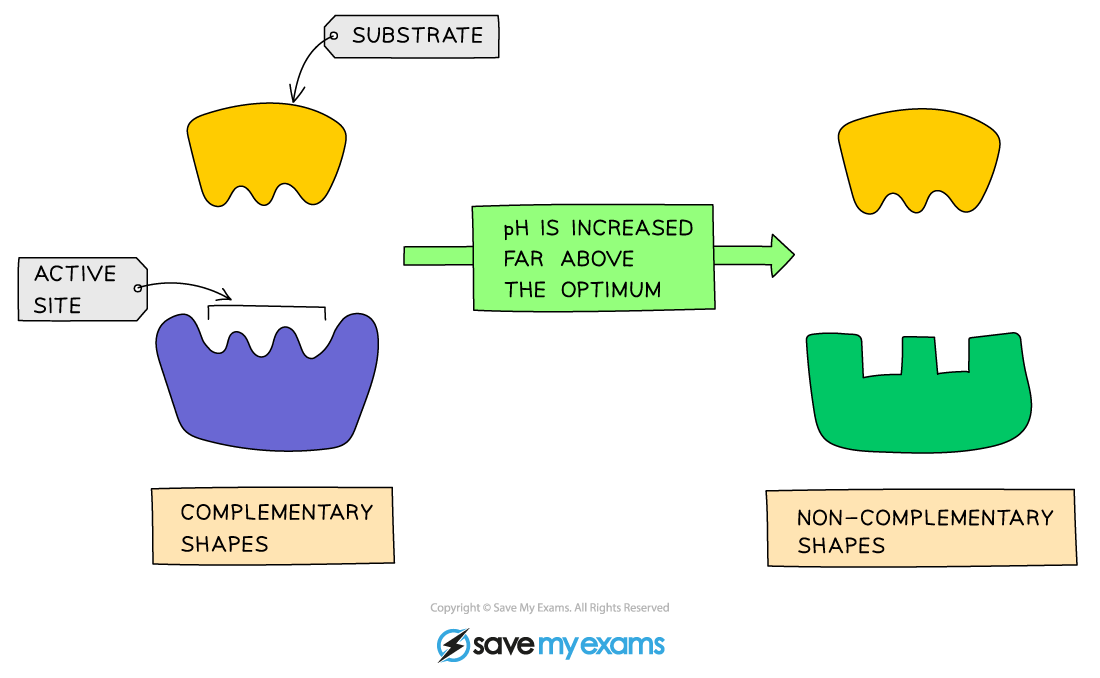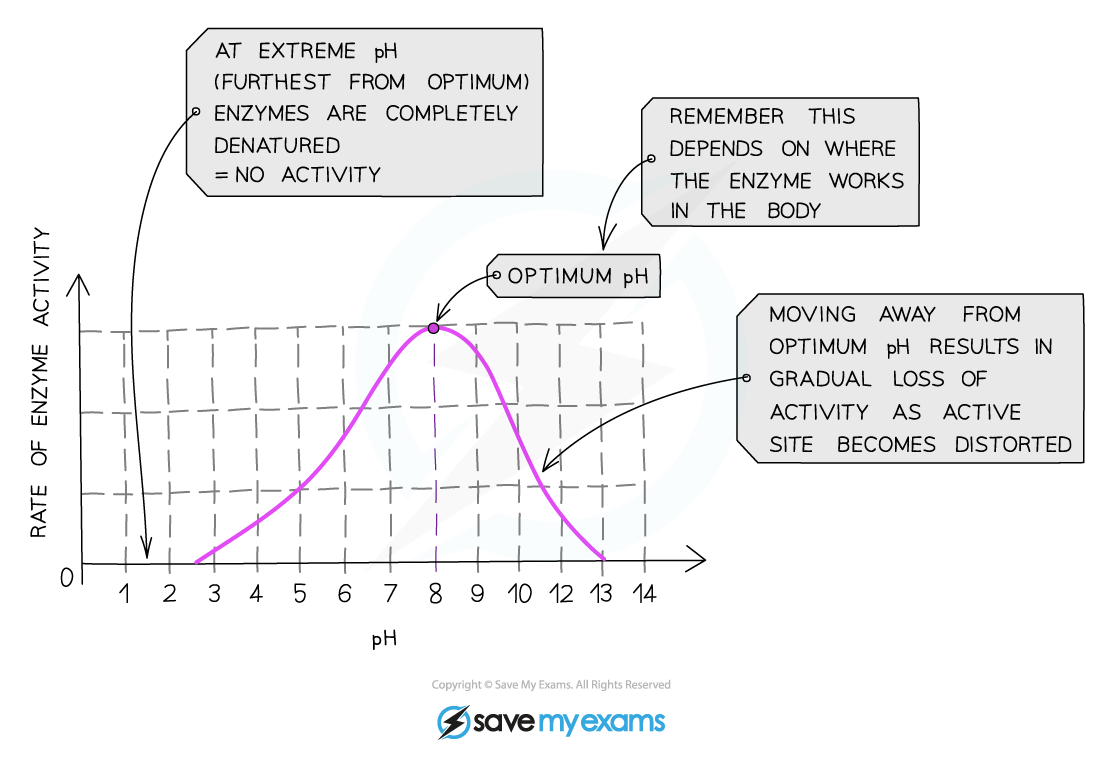- 翰林提供学术活动、国际课程、科研项目一站式留学背景提升服务!
- 400 888 0080
CIE IGCSE Biology: 复习笔记:5.1.5 Enzymes & pH: Extended
CIE IGCSE Biology: 复习笔记:5.1.5 Enzymes & pH: Extended
Enzymes & pH: Extended
- The optimum pH for most enzymes is 7 but some that are produced in acidic conditions, such as the stomach, have a lower optimum pH (pH 2) and some that are produced in alkaline conditions, such as the duodenum, have a higher optimum pH (pH 8 or 9)
- If the pH is too high or too low, the bonds that hold the amino acid chain together to make up the protein can be destroyed
- This will change the shape of the active site, so the substrate can no longer fit into it, reducing the rate of activity
- Moving too far away from the optimum pH will cause the enzyme to denature and activity will stop

Effect of pH on enzyme activity

Graph showing the effect of pH on rate of activity for an enzyme from the duodenum
转载自savemyexams

早鸟钜惠!翰林2025暑期班课上线

最新发布
© 2025. All Rights Reserved. 沪ICP备2023009024号-1








